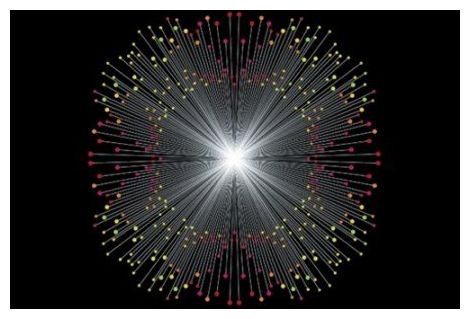
© Guardian Liberty Voice
There may actually be evidence of a correction needed to change what Einstein predicted as the speed of light possibly found. When astronomers first happened to see light from a supernova arrive 7.7 hours after neutrinos from the same occurrence, they disregarded the evidence. That was probably not a good idea because now it is believed that the speed of light may actually be slower than Einstein projected.
In the early morning hours of Feb. 24, 1987, a neutrino sensor located deep below a mountain in the north of Italy started to pick up a rapid explosion of neutrinos. Three hours after this, neutrino sensors at locations at two other sites also picked up parallel bursts.
About five hours after the second event, astronomers who were examining a large Magellan cloud which orbits the galaxy, happened to notice the startling enhancement of a blue supergiant star known as Sanduleak-69 202, as it became a supernova.
Since that time, its name has changed to SN 1987a, and it would become one of the most broadly studied supernovas in space history. Yet there continues to be a large mystery linked with SN 1987a that astrophysicists have basically ignored. That would be the event mentioned above about the two neutrino bursts separated by the span of several hours.
Both neutrinos and photons travel at the speed of light and therefore should arrive somewhere at the same time, all things being equal. The mystery is what caused such a huge delay between the first eruption of neutrinos and the onset of the optical photons.
Since all prior speed-of-light calculations have relied just on general relativity, they had not taken into account the slight effects of quantum mechanics but such effects are significant over very long distances and through such large masses like the Milky Way. Quantum mechanical effects should cause light to slow down in these particular types of circumstances state several astrophysicists and they have calculated that this more or less has accounted for the detected delay. They also think supernovas can also go through a second breakdown, which creates an additional neutrino burst. That would explain why the Earth detectors observed two bursts.
However the timing remains an enigma. The optical photons should have shown up around three hours after the first neutrino explosion instead of nearly five hours after the second surge. Because there was no justification for the event, astrophysicists decided to basically ignore the event, saying that it could not have been linked with the supernova itself and had to be some kind of strange coincidence, that being even though the chance of such a fluke happening, the odds equal to somewhere around one in 100,000.
Astrophysicist James Franson has decided to face the problem from a completely different viewpoint. He was fast to point out that physicists need to look at the effects of the gravitational potential on the quantum behavior of atoms in matter interferometry experiments that have been going on for quite some time now. He stated it is not at all a stretch to contemplate on how gravitational potential might also prove to have an effect on photons.
What he found he needed to support his thoughts was more evidence of the difference in the arrival times of neutrinos and photons from the supernovas. That should not have been too difficult to collect but not easy either. There were also experiments to measure the inconsistent magnetic moment of the electron in the deterioration rate of orthopositronium.
If Franson does indeed prove to be right and he shows that the speed of light is actually slower than what Einstein predicted, that find will be enormously important. The entire scientific world will be watching closely to see what happens next with his investigation. Because of it, there may actually soon be proof showing that a correction is needed in stating the speed of light.
Sources:Slashdot NewsMedium Science News
A possible simple solution to expain the discrepancy of SN1987a would be refraction. What would refract Neutrinos? Deep gravity well doing a bending thing. But then comes the hard part: Why would it bend back to parallel? What you would then have is a lensing effect, and the intervening lens would have to be 186,000 mi * 3.5 * 60 * 60 times thicker than what the first burst travelled through. That's about midway from Jupiter to Saturn from the Sun. Most lenses are many time more in diameter than thickness. So this lens would be gargantuan, the size of an entire Solar System. There are other possible configurations of a refracting medium, but who knows what is truly out there.
The change in time between bursts is apparent, due to the time/space needed to finish the refraction.